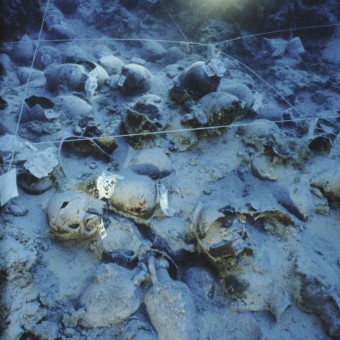 |
| Early Roman Britain and the local tribes |
The Britons were fond of a party, and loved showing off to their neighbours by throwing ever more lavish and richer events in an escalating round of oneupmanship. The Romans were great wine makers and a price was pretty quickly agreed on. Wine was transported in long, clay containers called amphorae, with a capacity of about 20 litres. And you could obtain one from a Roman in exchange for a slave.
Your first option was to get rid of unwanted family, of course. All those useless daughters, weakling sons, spare uncles, grannies and anyone else who didn't contribute to the tribe's upkeep. But once you ran out of relatives you had no option but to declare war on your neighbours.
So with cries of "let's go and beat up the Iceni" the Brits would go off to battle, seize a few potential slaves, then swap them for amphorae of the rich Roman red stuff - and party like it's 9BC. This all happened at a time archaeologists called LPRIA (Late pre-Roman Iron Age).
It went on for quite a few years, until the Romans got bored and just invaded, to seize their own slaves and keep the wine for themselves.The tribes continued to exist after the Roman invasion and made their own local deals with the new overlords. Although some didn't want to give in.
The Iceni were pretty fed up with it all by that stage and fought hard against the Romans, but they were eventually overcome, in spite of the best efforts of the brave Bodicea (Boudicca, whatever you want to call her).
A note on amphorae
They were tall, narrow, had shoulder-like handles, and came to a point at the bottom. The shape allowed them to be stacked on ships with the point slotted into the handle of the one below, and hence they didn't roll around in rough weather. They are often still found in situ in shipwrecks in the Mediterranean.
This photo (left) is from the Institute of Nautical Archaeology (INA) website.
I pinched the top map from Pinterest, so I have no idea where it originally came from. Sorry.


I have only just started exploring your blog, but I like this post, especially the map. Because I originally come from Caerwent, or Venta Silurum, market town of the Silures - and there they are on your map!
ReplyDeleteAll the best :)